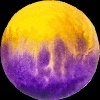Notice
Recent Posts
Recent Comments
Link
| 일 | 월 | 화 | 수 | 목 | 금 | 토 |
|---|---|---|---|---|---|---|
| 1 | 2 | 3 | 4 | 5 | 6 | |
| 7 | 8 | 9 | 10 | 11 | 12 | 13 |
| 14 | 15 | 16 | 17 | 18 | 19 | 20 |
| 21 | 22 | 23 | 24 | 25 | 26 | 27 |
| 28 | 29 | 30 | 31 |
Tags
- collectionview
- 클린 코드
- rxswift
- Protocol
- ribs
- 스위프트
- UITextView
- HIG
- MVVM
- SWIFT
- Observable
- 애니메이션
- Xcode
- RxCocoa
- scrollview
- ios
- uiscrollview
- tableView
- Refactoring
- swift documentation
- 리팩토링
- map
- clean architecture
- 리펙토링
- uitableview
- UICollectionView
- Clean Code
- combine
- Human interface guide
- swiftUI
Archives
- Today
- Total
김종권의 iOS 앱 개발 알아가기
[iOS - swift] 1. memgraph 메모리 프로파일링 - 샘플 준비 본문
1. memgraph 메모리 프로파일링 - 샘플 준비
2. memgraph 메모리 프로파일링 - vmmap을 사용하여 문제가 있는 코드의 메모리 주소 찾아내기
3. memgraph 메모리 프로파일링 - 메모리 주소로 코드 역추적하기
프로파일링 대상 샘플 앱
- 이미지 10000개를 리사이징하여 UIImageView에 넣는 코드
- 리사이징에서는 비효율적인 ImageContext 방법 사용 (이미지 리사이징 최적화 관련 개념은 이전 포스팅 글 참고)
class ViewController: UIViewController {
private let scrollView = UIScrollView()
private let stackView = UIStackView()
override func viewDidLoad() {
super.viewDidLoad()
...
addImages()
}
func addImages() {
let image = UIImage(named: "high_resolution_img")
(0...10000)
.forEach { _ in
let imageView = UIImageView(image: resizeImage(image: image!, targetSize: .init(width: 300, height: 300)))
stackView.addArrangedSubview(imageView)
}
}
func resizeImage(image: UIImage, targetSize: CGSize) -> UIImage {
let size = image.size
let widthRatio = targetSize.width / size.width
let heightRatio = targetSize.height / size.height
var newSize: CGSize
if widthRatio > heightRatio {
newSize = CGSize(width: size.width * heightRatio, height: size.height * heightRatio)
} else {
newSize = CGSize(width: size.width * widthRatio, height: size.height * widthRatio)
}
UIGraphicsBeginImageContextWithOptions(newSize, false, 1.0)
image.draw(in: CGRect(origin: .zero, size: newSize))
let newImage = UIGraphicsGetImageFromCurrentImageContext()
UIGraphicsEndImageContext()
return newImage ?? image
}
}- Xcode에서 단순히 메모리 상황을 보면 2.5GB나 사용하는 형태
- 만약 작은 용량이 작은 기기에서 해당 앱을 실행했다면 이미지에 메모리를 많이 사용하여 Other Processes의 용량이 0이 되어 OS 메모리에도 영향을 미쳐서 아이폰이 잠시 종료되는 현상도 발생

- 목적: 이 .memgraph 파일을 사용하여 역으로 메모리를 많이 잡아먹는 부분의 코드를 찾는것이 목적
.memgraph 준비
- Xcode 실행 > 하단에 memory graph 아이콘 클릭

- Xcode > File > Export memory graph 선택하여 .memgraph 파일 준비

* 이 파일을 가지고 다음 포스팅 글에서 메모리를 본격적으로 분석 계속...
'iOS 응용 (swift)' 카테고리의 다른 글
| [iOS - swift] 3.memgraph 메모리 프로파일링 - 메모리 주소로 코드 역추적하기 (malloc_history , Malloc Stack Logging) (1) | 2023.12.26 |
|---|---|
| [iOS - swift] 2. memgraph 메모리 프로파일링 - vmmap을 사용하여 문제가 있는 코드의 메모리 주소 찾아내기 (0) | 2023.12.25 |
| [iOS - swift] dictionary nil 초기화 시 주의사항 (2) | 2023.12.23 |
| [iOS - swift] UIPinchGestureRecognizer 개념 (줌 기능, zoom) (3) | 2023.12.22 |
| [iOS - swift] LazySequence 개념 (배열 데이터 다룰때의 최적화) (0) | 2023.12.20 |
Comments




